|
|
[Next meeting: Saturday, June 1, 2:00-4:00 PM]
One of the common reasons why people join a yoga class is to learn how to manage stress. Ever wondered what causes stress in the first place? Is it caused by people or events external to us, or is it something that happens in our own minds? Ever wondered why we have all the negative tendencies like anger, jealousy, hatred etc which corrupt our minds and blind our reasoning abilities? How does yoga help us deal with and overcome all these situations in life? Does the practice of yoga involve only the practice of asana (physical postures) or is there more to the practice?
Patanjali, in the Yoga Sutras provides an insight into not only these but many more questions and situations that we face in our life. Study and understanding of the sutras can bring about a true transformation in our lives.
As many of you are aware, we have a Yoga Sutras of Patanjali Study Group (YSP SG) wherein we discuss the underlying concepts of the yoga practice given to us by Patanjali. The group meets twice a month on the second and fourth Saturday of the month at 2-4 PM.
Continue reading »
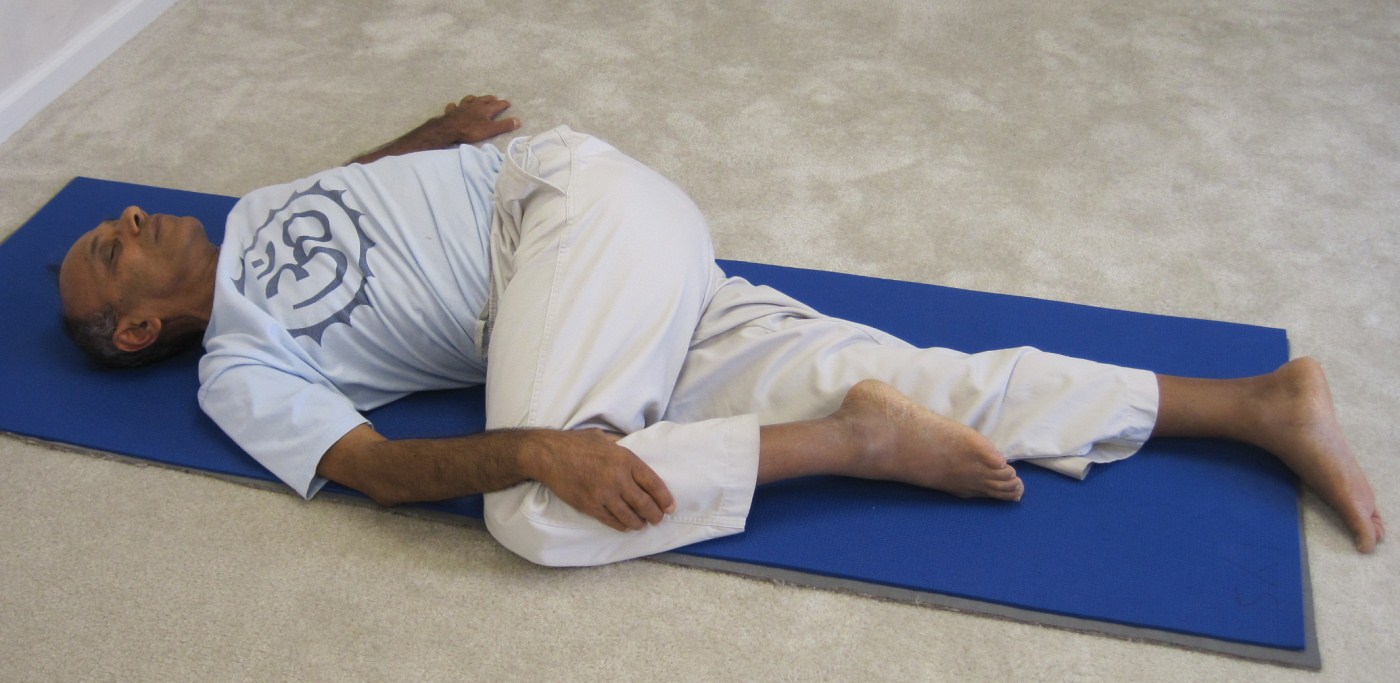
Lower back pain is perhaps the single most commonly mentioned reasons why people join yoga classes. There are several yoga poses that are recommended for taking care of lower back pain – for example, Marjarasana (cat & cow), Pawanamuktasana (wind-relieving pose), Balasana (child pose), all twisting poses etc. One of the poses that I personally enjoy and recommend highly is the Reclining Twist. In Sanskrit, it is variously named as Jathara Parivartanasana – जठरपरिवर्तनासन – (Abdomen Turning), Udarakarshanasana – उदराकर्षणासन – (abdominal stretching), and Supta Matsyendrasana – सुप्तमत्स्येन्द्रासन – (Reclining twist).
The reclining twist is what I call a "feel good asana" as it stretches multiple parts of the body in a gentle way and brings about a sense of refreshing rejuvenation and detoxification.
In my own practice, I make it a point to do this pose on a regular basic. I usually do it right after the inversion pose (shoulder stand or headstand) and before the seated spinal twist (Ardha Matsyendrasana).
Continue reading »
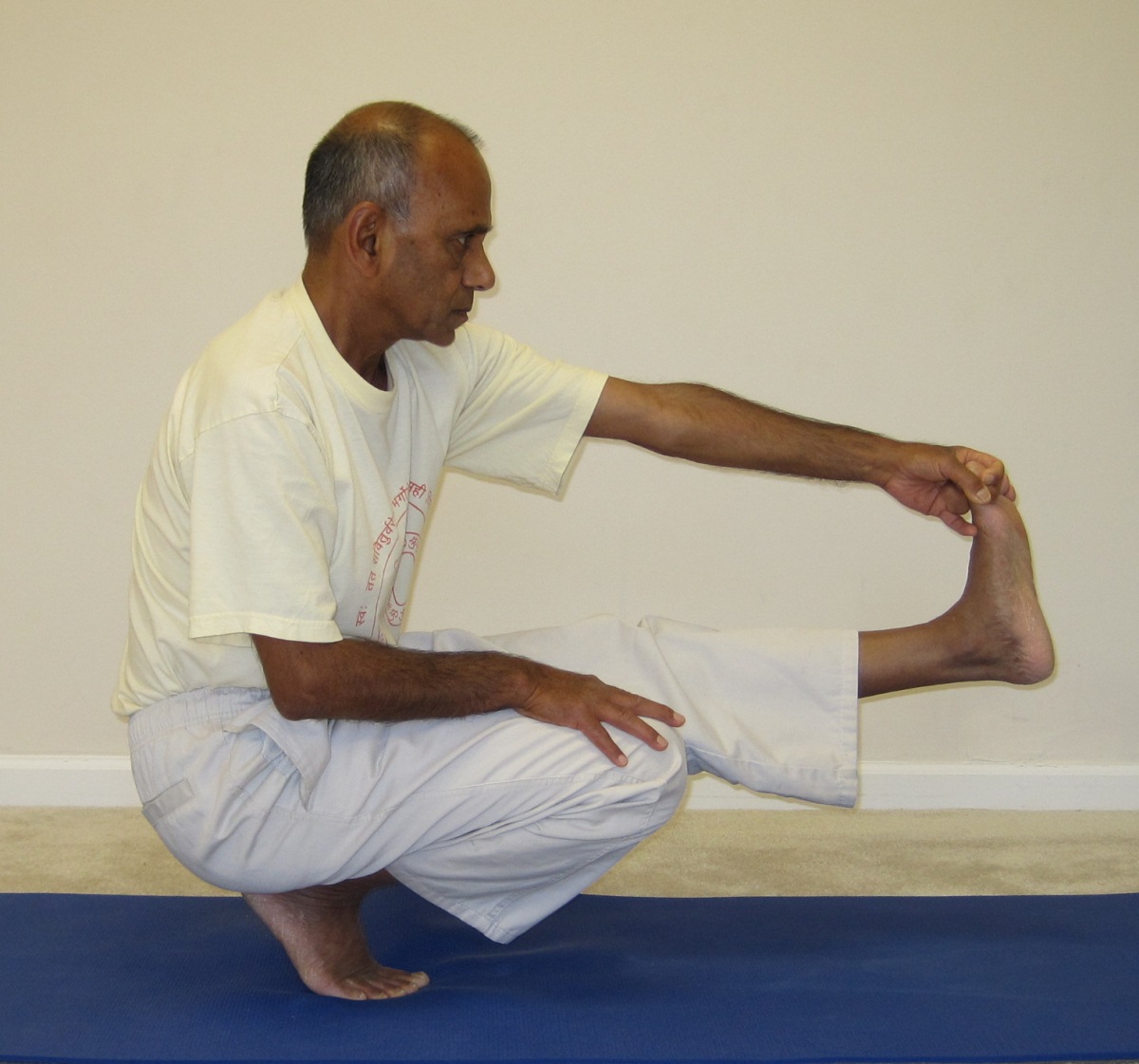
I am pleased to announce the next 21-day Yoga Challenge program. The past programs have been very well received by all the participants. For most of them, it has been truly a life-transforming experience. I invite you to join me on this exciting and deeply rewarding 21-day yoga journey. Here are the particulars:
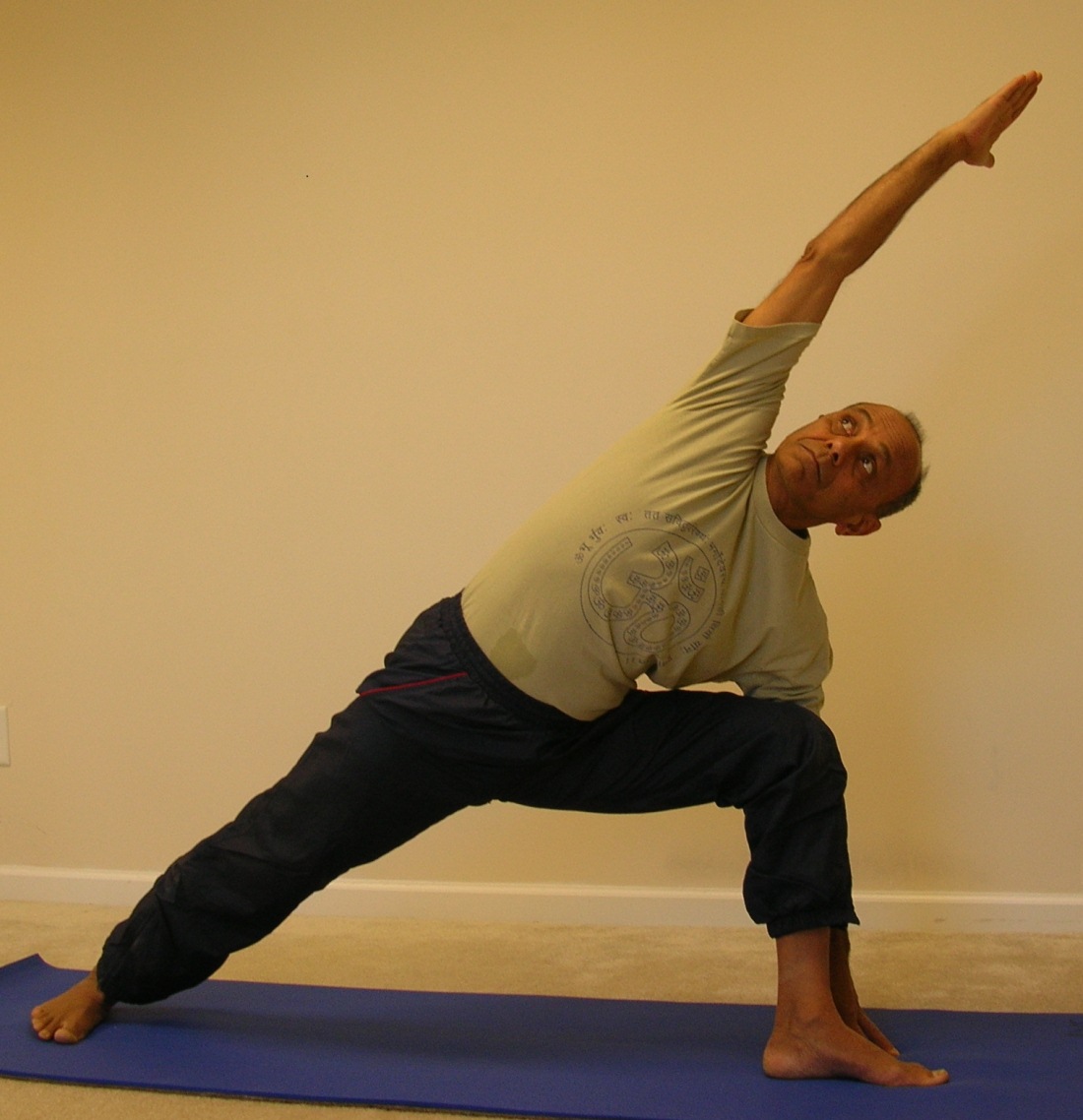
Utthita Parshvakonasana – उत्थित-पार्श्वकोणासन- is an intermediate level pose and can be considered an extension of the Warrior 2 (Virabhadrasana 2) pose. It is a composite of four Sanskrit words as follows:
utthita = lifted and extended
Parshva = side, flank
Kona = angle
Asana = pose
It is an excellent pose for stretching and strengthening the hips, legs, ankles, knees, and the spine. In my own practice and in the classes that I teach, I usually integrate this pose as an extension of the Warrior 2 pose which itself is integrated as a part of the Surya Namaskar (Sun Salutation) routine.
Step-by-step
Continue reading »
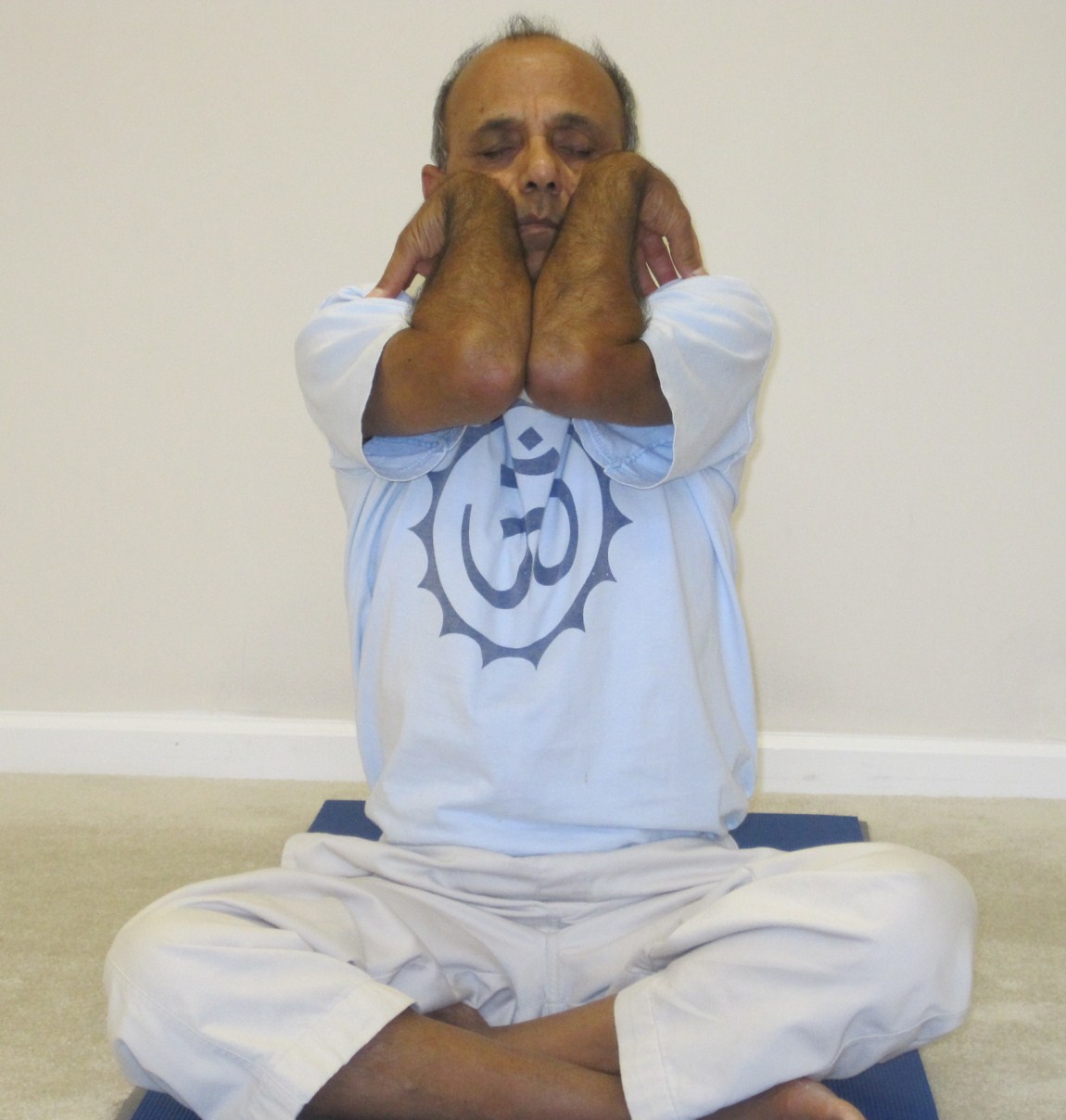
In the previous post, I described a few stretches to help release tension from the neck muscles. As we know, the neck and shoulders are closely tied together through the nervous system as nerves from the neck pass through the shoulders and down the arms. As such, stretches for the neck and shoulders are usually practiced together so we can relax both the neck and the shoulders together. As I mentioned in the previous post, for most people, the physical manifestation of stress comes in the form of pain in the neck and shoulders.
I am giving here some of the stretches that will help stretch and relax the shoulder muscles and joints.
Continue reading »

Stress relief or stress management is perhaps one of the most common reasons why people join a yoga class. In addition to the mental and emotional suffering caused by stress, most people tend to feel its physical manifestation in the form of pain or discomfort in the neck and shoulder area. Of course, stress can manifest in other areas as well, for example, jaws, spine or the hips etc. However, neck and shoulders are the ones most commonly mentioned by my students. The problem is further exacerbated because most of us sit in front the computer all day long in non-optimal postures which causes further strain to the neck and shoulders.
In today’s post, I will be describing some simple stretches that can provide relief to these two areas. We should note that neck and shoulder muscles are intimately connected together and it is best to practice stretches that will benefit both the areas.
Stretches for the neck
Keep in mind that the neck muscles are very soft and tender. All the stretches given here should be done slowly and with full awareness of the neck muscles to ensure that we don’t inadvertently injure or aggravate the neck pain.
Continue reading »
On Saturday, March 2, the Hindu Temple (HSNC – Hindu Society of North Carolina) organized a yoga event dubbed as "Surya Namaskar Yogathon" wherein we practiced 108 rounds of Surya Namaskar (Sun Salutations). Before talking about the event, I would like to present some background information on Surya Namaskar.
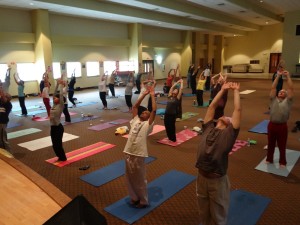
Introduction
If you have attended a yoga class, be that at a yoga studio, a health club, gym, or online, chances are that Surya Namaskar (Sun Salutations) was a part of the routine. Surya Namaskar has now become an integral part of most yoga styles that are practiced. As expected, each style of yoga introduces its own variations into the Surya Namaskar routine.
Traditionally, Surya Namaskar consists of 12 movements which are woven together in a nice, flowing, dance-like sequence, with each move synchronized with the appropriate breathing pattern. Practice of Surya Namaskar impacts all aspects of the body – physical, physiological, mental, emotional and even deeper.
Continue reading »
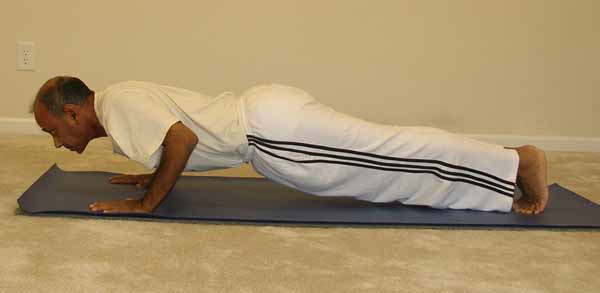
When a new student joins my yoga classes, I have them introduce themselves to the class. As a part of the introduction, they are asked to tell why they decided to join a yoga class. One of the common reasons mentioned is weight loss. Of course, many students have doubts as to how yoga, which is generally a gentler form of exercise, can help you lose weight. Most people tend to identify weight loss with vigorous physical activities in a gym or a fitness center – treadmill, pumping iron etc.
How to lose weight?
Continue reading »
Whether you are a seasoned practitioner or an infrequent practitioner of meditation, you know how difficult it is to keep the mind steady on the object of your meditation. That is simply because that is the very nature of the mind. The mind only knows how to run around with different thoughts, emotions, feelings, perceptions etc. Swami Vivekananda likened the mind to a monkey – not an ordinary monkey but one who has had an alcoholic drink or two. Not only that, but the monkey has also been bitten by a scorpion. That is how the mind behaves all the time.
During meditation, we try to focus our mind on a single object and try to keep that focus without intrusion by other thoughts. One simple technique that I have found very helpful in my own meditation practice is to cycle the awareness through a sequence of body awareness, breath awareness, awareness on the third eye (spot between the two eyebrows) and then focus on the object of meditation. During the recent yoga intensive, I took the students through a guided meditation using this technique. I invite you to listen to this audio and use it as a guided meditation sequence for your own meditation practice.
I would love to get your feedback.
As we have seen before, yoga has been defined in yoga sutras by Patanjali as "yogash-chitta-vritti-nirodhah" or "yoga is the cessation of the fluctuations of the mind-field". Put another way, yoga is the ability to keep the mind calm and peaceful under all circumstances. In order to understand how to keep the mind calm, it is essential first to understand what distracts the mind all the time. The term used by Patanjali for these distractions or perturbations of the mind is "vritti". After providing a basic definition of yoga, Patanjali goes on to describe the five "vrittis" which cause disturbance in the mind. These five are:
- Pramana (Right knowledge)
- Viparyaya (Wrong knowledge)
- Vikalpa (Imaginary knowledge0
- Smriti (Memories)
- Nidra (Sleep)
During the recent yoga intensive, I discussed the concept of these five vrittis and how they function in the mind. Please listen to this audio recording from that session. I would love to get your feedback or comments.
|
Video DVD
Yoga with Subhash (asana and pranayama)
- Basic asana sequence (~50 min) ($18)
- Pranayama/Meditation (~35 min) ($12)
- Set of above two ($25)
Video recording of special programs offered in the past
(Links to YouTube videos will be provided)
- 21-day yoga immersion - $40
- 7-day hip opening intensive - $20
- 14-day meditation intensive - $30
- 14-day pranayama intensive - $30
- 7-day hamstring/quad intensive - $20
- 14-day Level 2 yoga intensive - $35
Payment options:
- cash, check, Zelle (use subhashmittal@gmail.com) or Venmo (use 9199269717)
- PayPal (go to bottom of page) (add $5 to the fee listed above)
Please contact me if you would like to buy.
|







Recent Comments